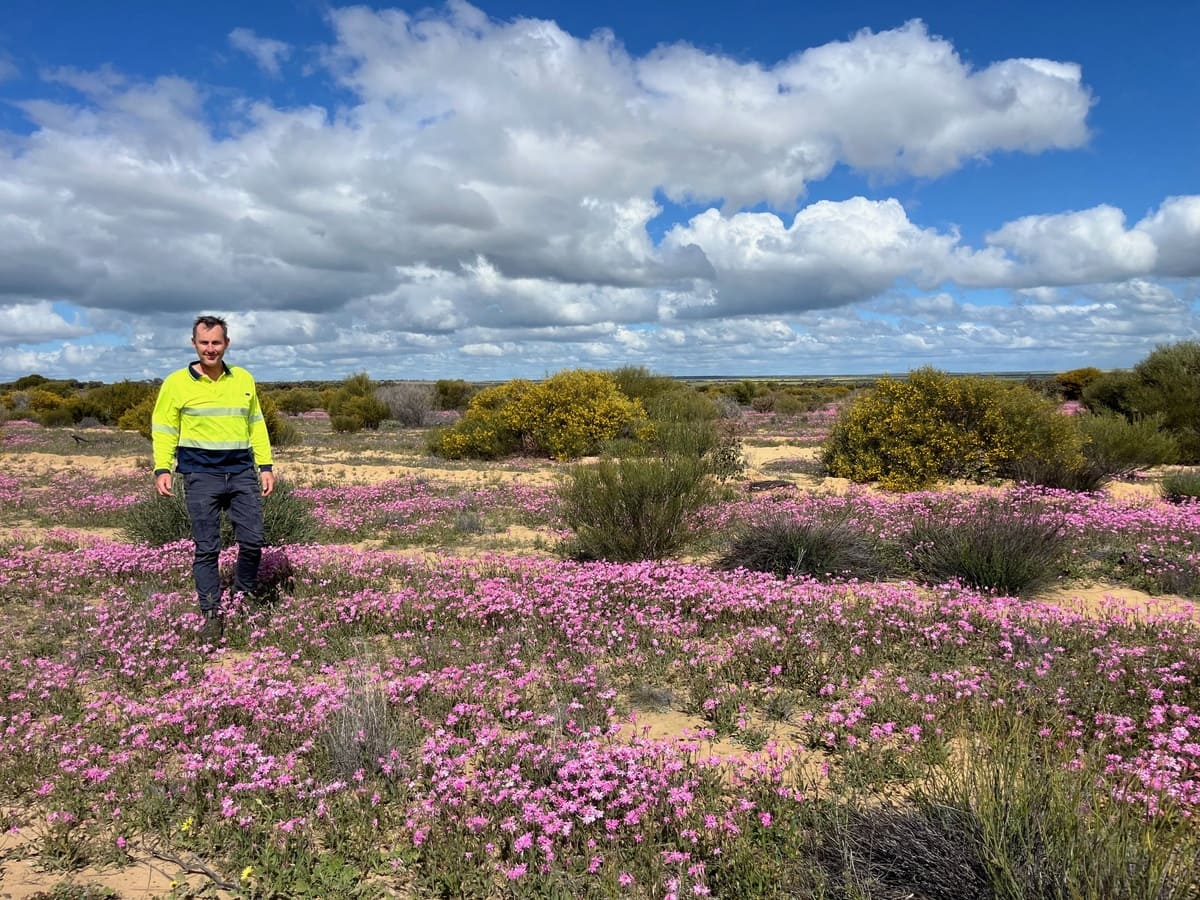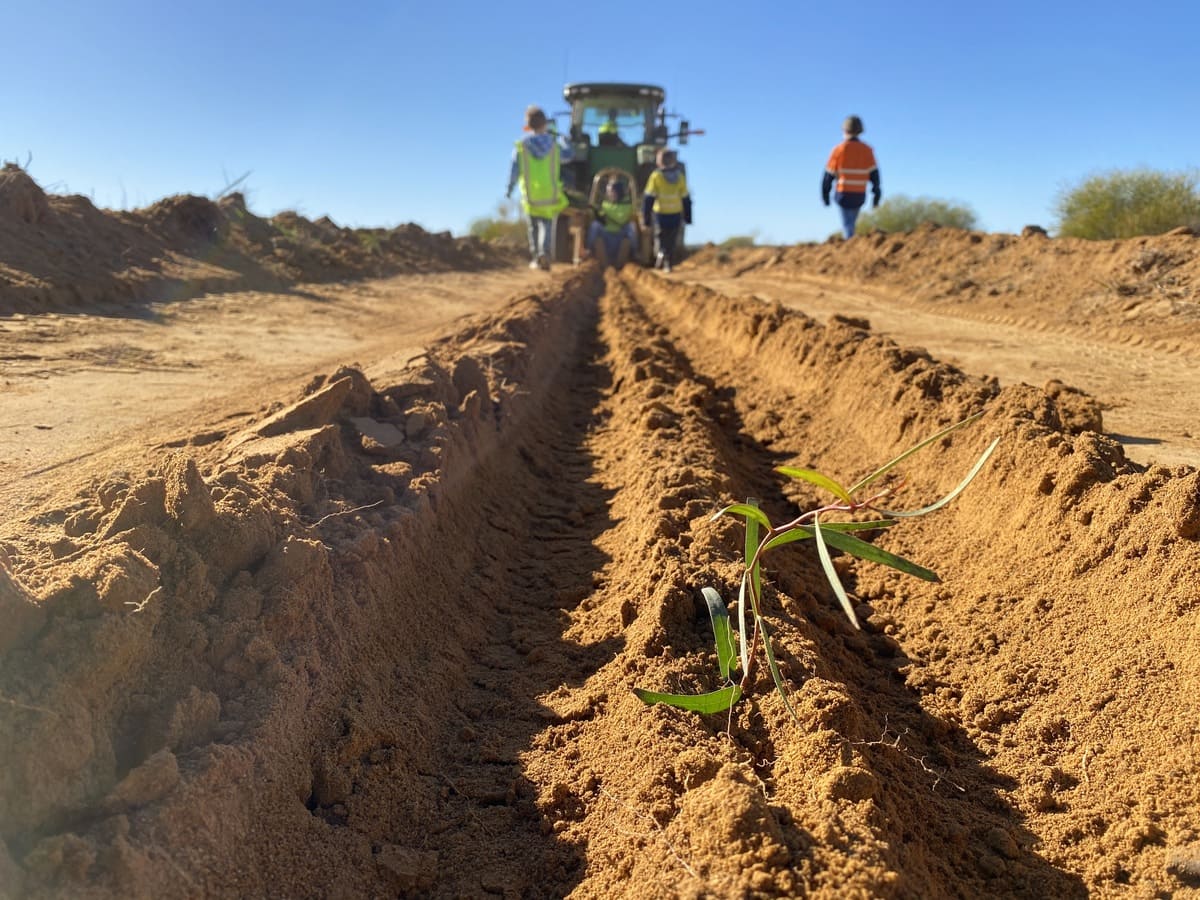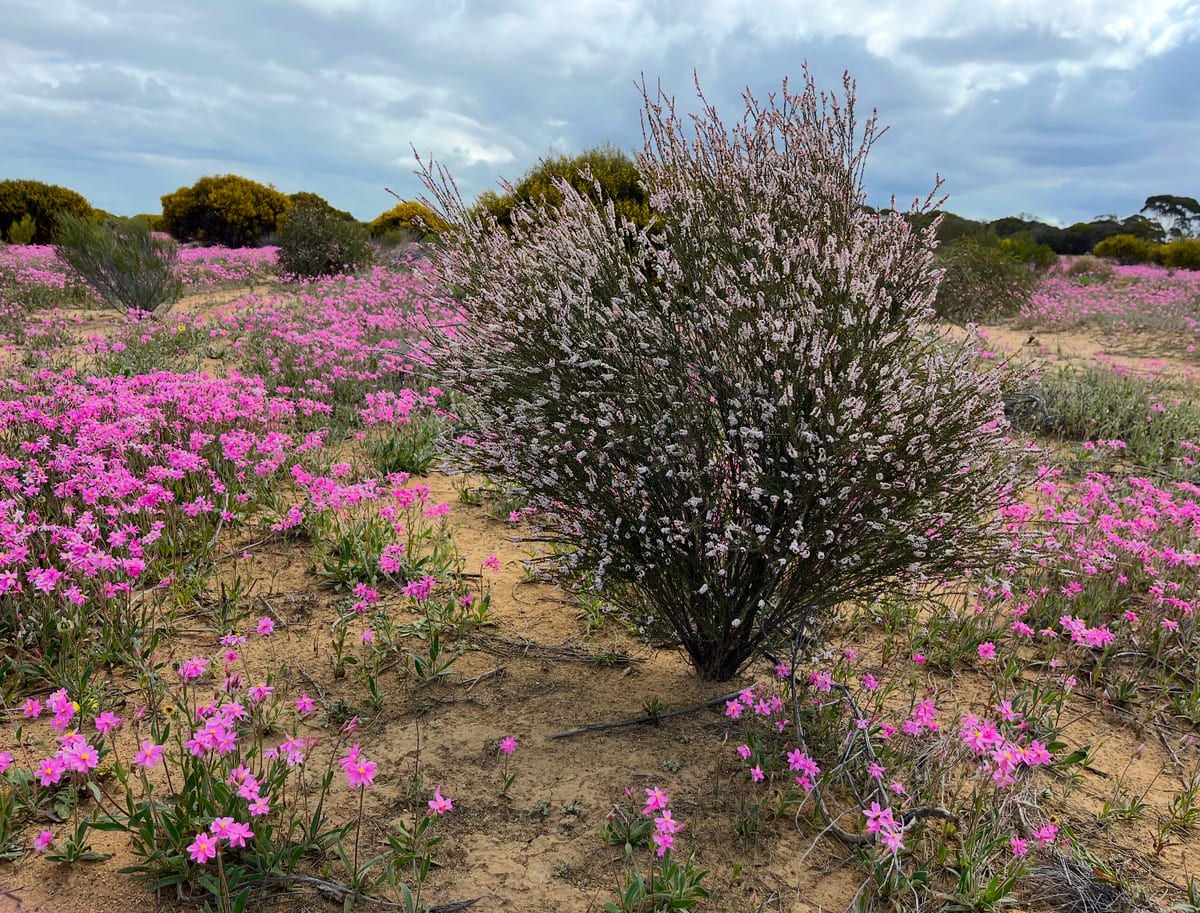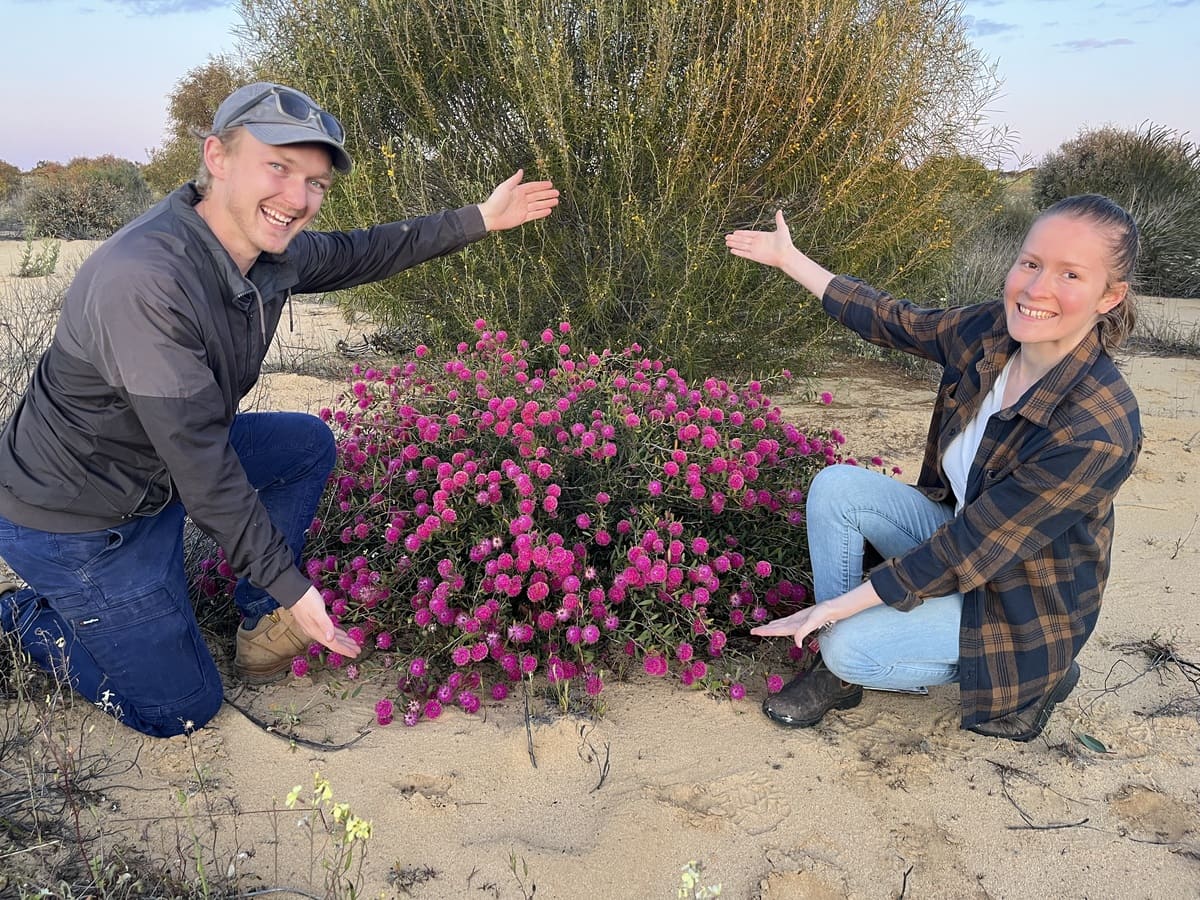Posted by on
07/08/2025
For Bob and Amanda Nixon, natural capital embodies the “co-benefits” of holistic landscape management, which stems from healthy productive soils, enhanced biodiversity through revegetation and the preservation of remnant vegetation.
“It is essentially whole of landscape management and knitting all the parts together,” Bob explains. “It’s what makes the system hum.”
The Nixons, who operate a multigenerational 13,500-hectare broadacre cropping enterprise at Kalannie in the northeastern wheatbelt of Western Australia – with the sixth generation now on-farm – are excited about their business’s future with its strong focus on soil health.
“We are running a good sustainable business where we try to add value to our soil health and the natural environment,” Bob says. “Natural capital is potentially a term that can measure, sell and package it for our social licence.”
Going “hand in hand” with carbon, Bob says he sees carbon as potentially the “largest value pool that is going to pay for the co-benefits like the natural capital value for improved soil health and environment.”
Participants of the Australian Carbon Credit Unit (ACCU) scheme, the Nixons purchased what they describe as a degraded 1400-hectare property in 2019, setting aside 600 hectares for biodiversity replanting.
“We bought it with the intention of replanting it, with a focus on biodiversity over half the property,” Bob says. “That is why we bought it; we never intended to crop the poor areas.”
Explaining the downstream impact from the property from the soil erosion taking place and the rainfall recharge causing salinity impact.

The project has been a family affair, with the Nixons’ three children planting the bulk of the 200,000 trees during their school holidays, along with the help of the farm team.
“We have had nephews and nieces come up to plant the trees,” Amanda says. “While our kids brought city friends home, providing a country-cousin type link between the city and country for the project.”
Planting more than 50,000 trees each year, the Nixons have retained ownership of their 30,000 carbon credits, citing that they “still own the story”.
“Potentially at some point we could sell those credits to a third party, or we could monetise the story in our own business,” Bob says. “It’s a pretty cool story. Connecting to the wider community and markets has incredible value.”
Completing the revegetation project in 2023, the Nixons have noticed that using lower density tree planting has allowed “nature to heal it as well” with many tree species and understorey returning naturally.
From a biodiversity perspective, Amanda describes the wildflowers as “phenomenal”, while the Nixons have observed honeyeaters attracted to the flowering species.
Additionally, they have incorporated rare or near threatened banksia species, banksia benthamiana, into their planting mix which Amanda has been told the mallee fowl in the area use for their nests.

Bob notes that the plantings have not only “transformed the environment” but have had co-benefits for their cropping program on the remaining 800 hectares.
“When you talk co-benefits, it was an area that was degraded, recharging and causing salinity further downstream," Bob says. "So part of the reason for doing the project was to try and protect good farming land lower in the catchment.”
In their cropping program, the Nixons implement various management practices to “build soil health over time” such as no till, soil amelioration to help remove constraints like soil acidity and compaction, and cutting stubble higher with inter-row sowing to “keep as much straw/cover as possible to protect the soil”.
“Soil health is our most valuable asset,” Bob says. “Our number one driver here is to maximise soil cover at all times to not allow an opportunity for soil erosion, whether that’s from wind or water.”
Managing both sandy, light soils to gravels and heavier soils, Bob says they face inherent soil constraints. Lighter soil types have become increasingly important as they take less moisture to germinate and grow a crop.
“Western Australia is characterised by the oldest weathered landscapes in the world,” he says. This has seen the Nixons implement soil constraint projects and amelioration through deep ripping, spading and liming to help remove soil acidity and compaction on the lighter soils, while managing sodicity and salinity on the heavier ones.
It is these soil management practices, he says, that really come to the fore in drier seasons.
“Since 2000, we have noticed there has been a big decline in rainfall, so we have had to develop more resilient cropping systems, which means looking after and investing in our soil,” Bob explains.
“It has helped take the pressure off salinity because you are not getting as much recharge, so there is more of a focus on improving soil health and increasing the productive capacity of our soils.”
Whereas with heavier soils, Bob says they “potentially leave crops out if it is a very dry, poor start” by incorporating fallow into their cropping program.
Other management practices include a targeted approach to fertiliser application, integrated weed management and increasing machinery efficiency.
“We have revegetated the poorer zones, but in the good cropping zones, we have driven efficiencies to maximise cropping efficiency and reduce machinery overlap, adopted better weed hygiene to use less pesticides and minimised fertiliser overlap. It is whole landscape management.”

Looking forward, the Nixons who now have two grandsons on the farm with the return of their son and his fiancé, aim to continue to farm with best practice to enhance their natural capital.
“Whoever is going to be looking after this land, working it, it is about having a guardianship approach,” Amanda emphasises. “We are fortunate to be here and will do our best by it.”
Bob concurs. “I like to think right now that the overall farming system is quite healthy.” Highlighting the importance of maintaining a “good profitable business” to support investment in natural capital improving practices.
“For us, the reason we can do this is because we have a good business, which gives us the ability to reinvest and do the right thing. If we didn’t have that, we wouldn’t have been able to consider it.”
Disclaimer: This case study is published by Rabobank Australia Limited ABN 50 001 621 129 AFSL 234700 and Coöperatieve Rabobank U.A. (Australia Branch) ABN 70003917655 AFSL 238446 (together, “we” or “us”). The information in this case study is based on information provided to us by the clients to whom it relates. We have attempted to accurately reflect that information in this case study but do not represent, guarantee or warrant that is complete or accurate. The views and opinions expressed are those of the clients quoted as making them or are paraphrased from information provided by them, and reflect their experiences and judgements. The contents of this publication are general in nature and do not take into account your personal objectives, financial situation or needs. Before acting on the contents of this publication, you should consider whether it is appropriate for you, having regard to your own circumstances. As such, the contents of this publication should not be relied upon as a basis for any financial decisions. Rabobank Australia recommends that you seek independent advice from your accountant or financial adviser before making any financial decisions related in any way to the contents of this publication. We do not accept any liability for any loss or damage arising out of any error or omission in this publication or arising out of any reliance or use of this publication or its contents or otherwise arising in connection therewith. This publication may not be reproduced or distributed in whole or in part, except with our prior written consent.
